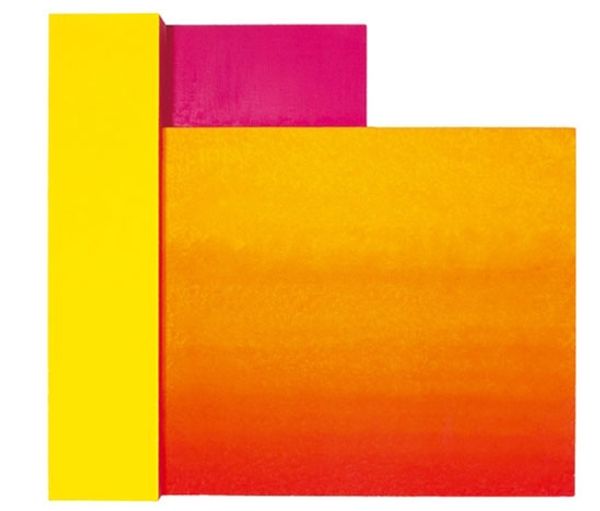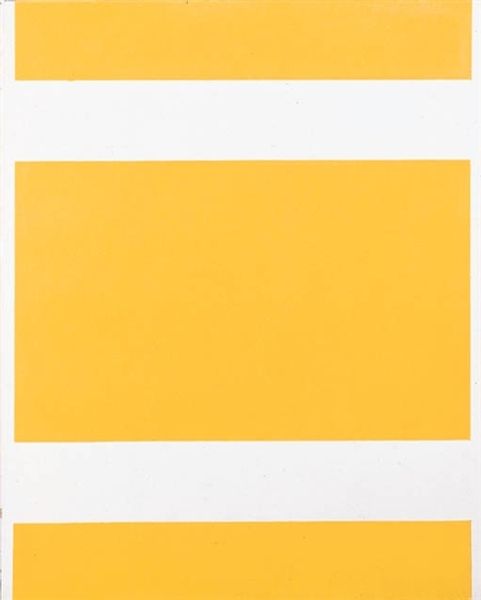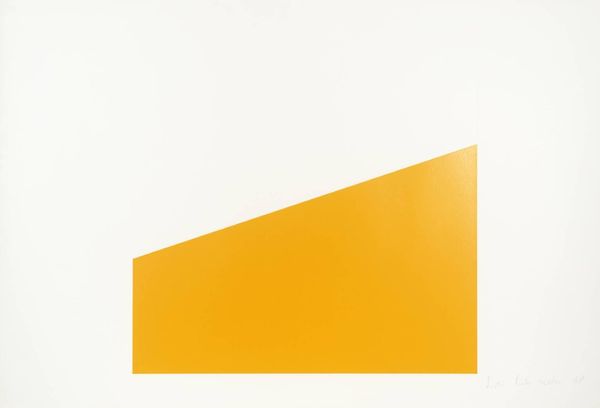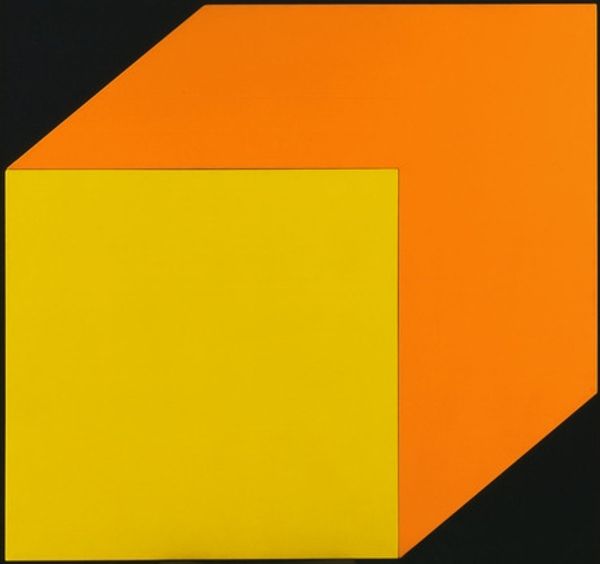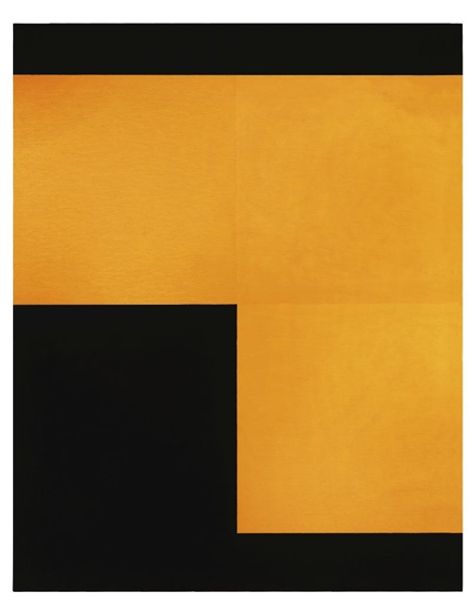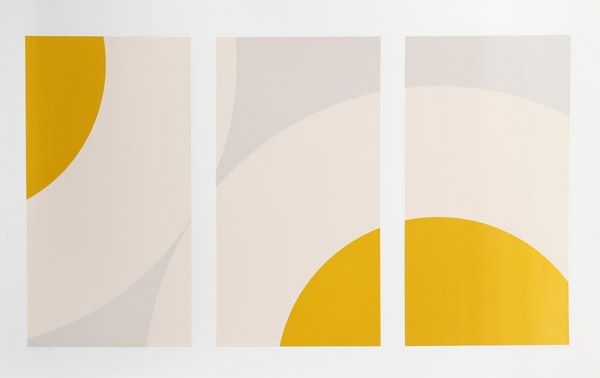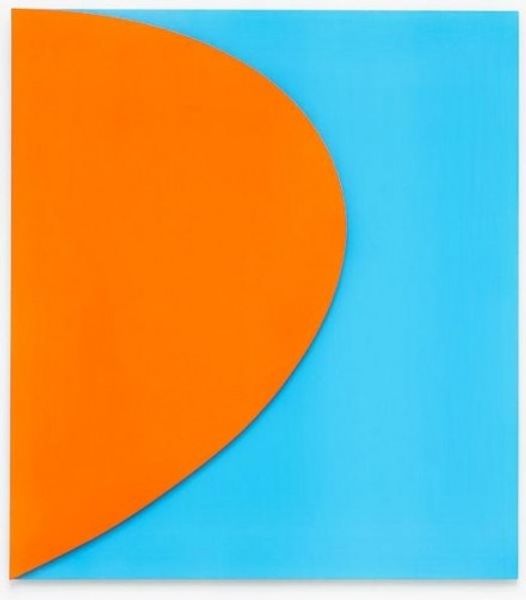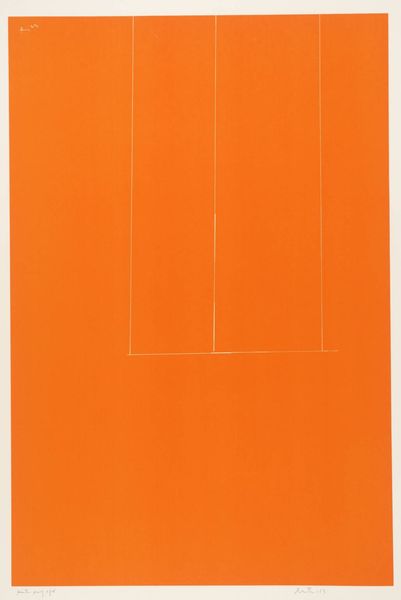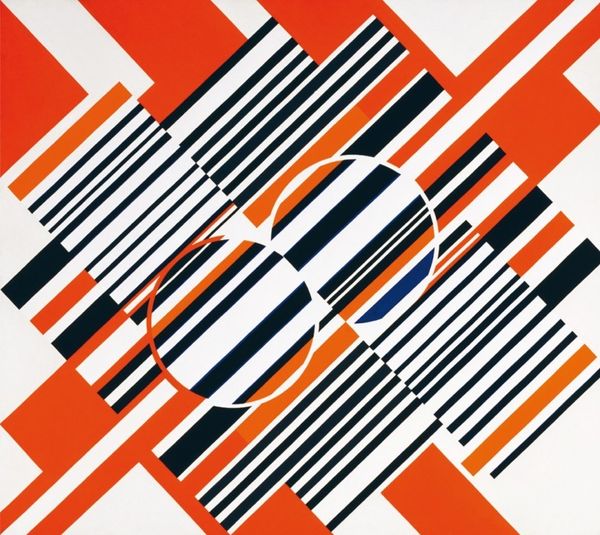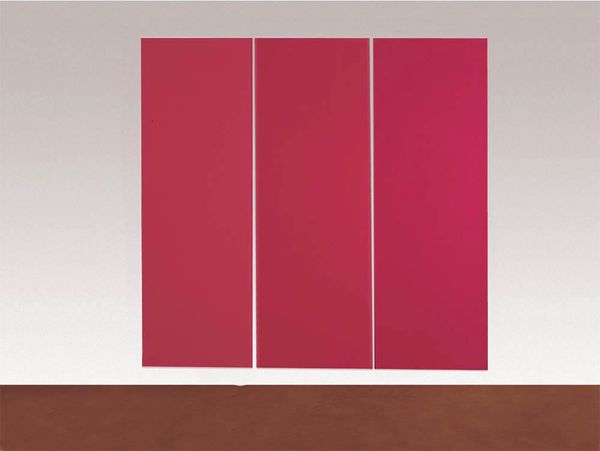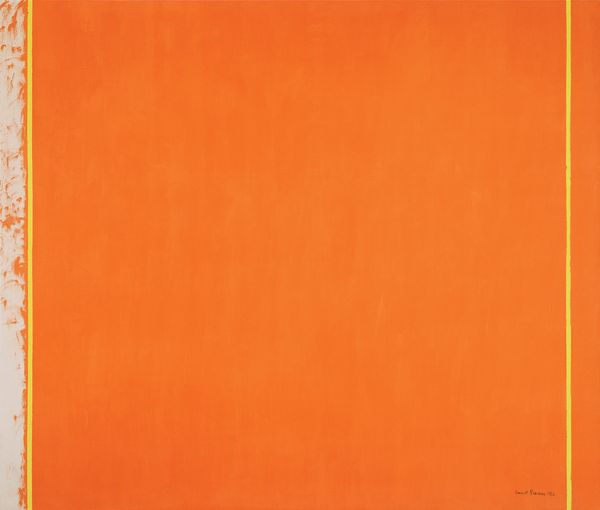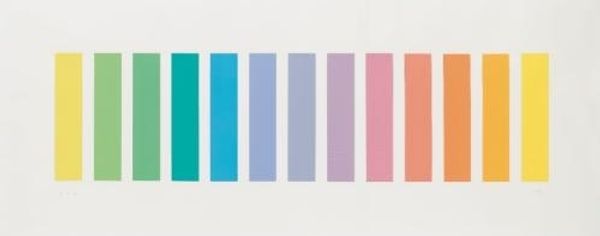
#
red colour repetition
#
geometric pattern
#
abstract pattern
#
rectangle
#
minimal pattern
#
organic pattern
#
vertical pattern
#
line
#
pattern repetition
#
layered pattern
#
repetition of red colour
#
orange
#
sweeping and geometric line
Copyright: Doug Ohlson,Fair Use
Curator: Welcome. We’re standing before Doug Ohlson’s “Avery,” painted in 1968. What strikes you about it? Editor: The insistent warmth! It’s both vibrant and subdued. These orange rectangles—almost pillars—arranged in such a precise way feel so grounding, yet also expansive. I find that tension intriguing. Curator: Interesting. The repetition does offer a feeling of stability, like the columns of a temple, but there is also something of an industrial building repeated again and again. Beyond the geometry and warm hues, I wonder about the use of that square motif at the base of several forms. I’m compelled by what may lurk in its symbolism. Editor: I see the color choice as far from accidental, too. Orange during this era—late '60s—carries a lot of counter-cultural weight, doesn't it? Especially when considering that abstract expressionism has always challenged norms, or has aimed to be a mirror of them, perhaps Ohlson is pushing boundaries here. It's fascinating to consider art as a rebellion within the very framework of tradition. Curator: I’m less convinced by a direct tie to counterculture. Instead, I see it emerging more from the established abstract painting traditions but through this lens he seems to push and prod. Those shapes carry something ancient with them, resonating with architectural stability and cosmic patterns but subverted ever so gently. There is balance. Editor: So you feel the subtle variations play a crucial role? The slight shift in form placement, and even those pinkish square elements give “Avery” an undercurrent of the artist questioning structures of power. I cannot ignore the tension there. Curator: Indeed! The emotional impact arises precisely from these contrasts and the simplicity that defines the painting as a whole. The pink at the bottom may function almost like small markers to keep our attention to both earth and heaven at once. A fascinating meditation on how we find structure, order and thus also our symbolism in abstraction itself. Editor: Ultimately, a powerful reminder that art is not just about aesthetics but a social record reflecting its time, wouldn’t you agree? I now look at Ohlson with completely fresh eyes! Curator: Indeed, that is part of its power, and a painting like “Avery” invites us into this contemplation with its seemingly simple surface, yet endless depths. A true example of visual contemplation.
Comments
No comments
Be the first to comment and join the conversation on the ultimate creative platform.
